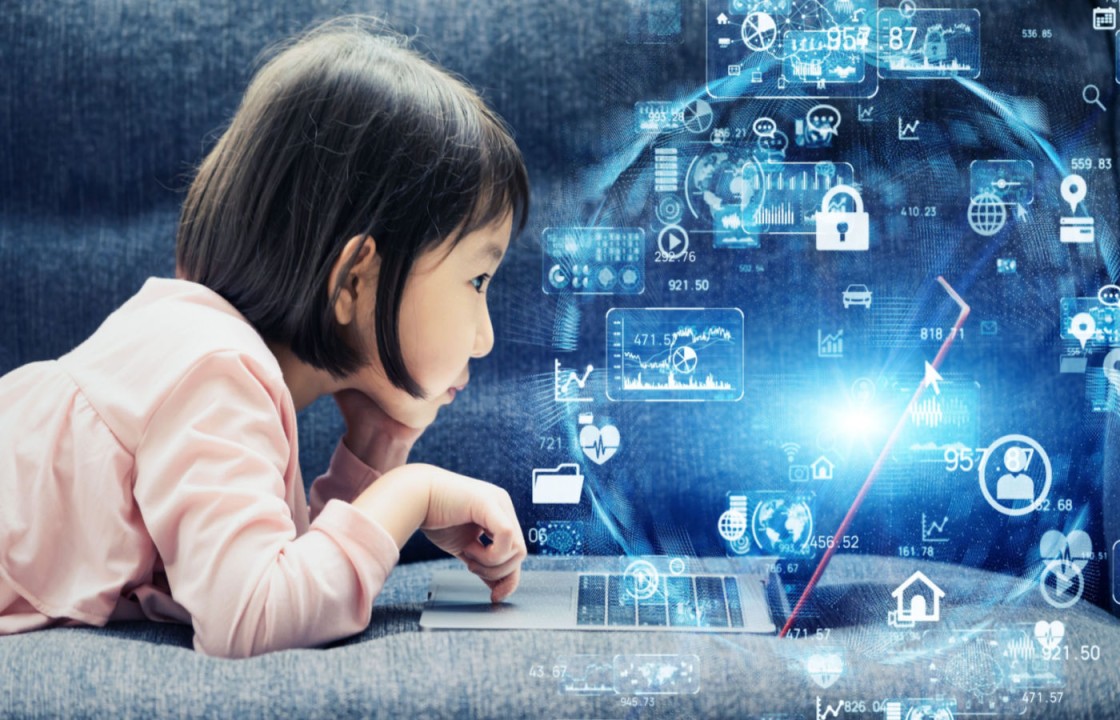Guest Blog: How AI Interactive Presentation Tools Are Revolutionizing The Education Landscape?


Artificial Intelligence (AI) has become a buzzword across industries recently. Mainly the newly launched AI-powered interactive presentation tools are noteworthy. This tool is revolutionizing the education landscape by enabling teachers to create more engaging and personalized student learning experiences, significantly impacting the field by simplifying and enhancing learning, development, and growth processes.
In a report conducted by UNESCO, AI in education is expected to be worth $6 billion by 2024‘ Another report by Global Market Insights highlights that AI in the education market is predicted to exceed $80 billion by 2030. AI interactive presentation tools are transforming the global education landscape by changing traditional teaching methods and making learning more engaging and interactive for students. While AI-powered presentations offer multiple benefits, here are a few ways it revolutionizes the education landscape.
Promotes inclusion and universal access.
AI tools can help break down barriers for students who face challenges such as language barriers or visual or hearing impairments. For example, interactive presentation tools provide accessibility and create a more inclusive environment, ensuring no student feels left out. Additionally, interactive AI presentations encourage shy, introverted students to participate in class without fearing being judged. They also enable students to participate anonymously, allowing them to engage with the material without the pressure of public speaking. This promotes classroom inclusivity, ensuring every student feels heard and valued. Overall, interactive AI presentations are a powerful tool for promoting inclusion and universal access to education.
Personalized Learning
Interactive presentations powered by AI technology offer numerous advantages in promoting personalized learning, making it a genuine possibility for learners. With AI, learners can have more control over their learning and development activities, allowing them to move through the content at their own pace and according to their preferences.
AI technology collects data on a learner’s abilities and preferences, enabling it to establish a personalized and adaptive learning route that continually changes to suit the learner’s needs. This level of personalization not only improves the learning experience but also makes it more responsive to learners’ individual needs and requests. Interactive presentations powered by AI technology thus provide an effective way to promote personalized learning, helping learners to achieve their full potential. The Turnaround Challenge, funded by the Bill and Melinda Gates Foundation, found that personalized learning models that organize instruction around individual student needs are the most effective.
Enhanced Student Engagement and Creating a Connection: AI interactive presentation tools like Sendsteps enable students to participate in polls, surveys, quizzes, and other interactive activities. When students respond, witty responses get oohs and ahs, allowing the lecturer to engage directly, thus breaking the ice, making themselves approachable, and the students feel more confident in engaging in the class.
With AI interactive presentation tools, teachers can create visual and interactive content that is more engaging than traditional text-based learning materials. They can use features like videos, animations, and interactive quizzes to make learning more enjoyable and memorable. A study by Gallup[1] in 2019 surveyed over 110,000 Texas students from grades 5 through 12, revealing that schools in the top quartile of student engagement had significantly more students meeting and exceeding proficiency requirements than those in the bottom quartile. This highlights the importance of engaging students in the learning process, and interactive AI presentations are a valuable tool for achieving this goal.
The Markets And Markets report suggests that the global use of AI in education could grow to $3,683.5 million / 3.6 billion in 2023.
Improved Student Performance
Online higher education has attracted extensive attention during COVID-19 to improve the quality of personalization, monitoring, and evaluation in learning. Interactive presentations powered by AI technology have brought significant benefits to student performance. By providing real-time data and analyses, AI-powered computer-aided assessment has helped teachers and students identify areas of strength and weakness in student performance. This enables timely interventions to address any issues in teaching and learning, ultimately leading to better student outcomes. With the help of AI, teachers can gain valuable insights into their student’s progress and adjust their teaching strategies accordingly. On the other hand, students benefit from personalized feedback and a more engaging learning experience that caters to their individual needs and learning styles. Overall, AI-powered interactive presentations have the potential to enhance the effectiveness of teaching and improve student performance.
Improved Teacher Feedback: AI interactive presentation tools allow real-time data analysis, letting teachers gather feedback on their teaching style, materials, and approach. This helps them understand their students’ needs and improve their teaching strategies, allowing students to follow the presentation in real-time and ask questions about any topic covered. AI-driven quizzes and tests also provide students with immediate feedback on their understanding of the material. Students can even go back and review the presentation at a later date if needed.
Gamification: Interactive presentations powered by AI technology can provide significant advantages for promoting student performance. Many students in the Gen Z and Gen Alpha age groups are already accustomed to interactive experiences through video games and other digital platforms. Incorporating AI-powered educational games and simulations into the classroom can make learning more enjoyable and engaging. In a recent study, scientists found that gamification in the classroom increased student engagement and productivity. The researchers introduced a point system for various class activities and measured the level of engagement displayed by students. The results showed that the game-like atmosphere created by gamification was well-received in the classroom and positively impacted student performance.
Moreover, gamified learning has been found to help students retain more of what they learn. This is supported by studies in which employees learning through e-learning modules with gamification experienced an approximately 40% increase in knowledge retention. By leveraging the power of gamification in interactive presentations powered by AI technology, educators can create a more engaging and practical learning experience for their students.
AI interactive presentation software is the gateway to the next learning dimension in education.
Research indicates that 20 to 40 percent of current teacher hours are spent on activities that could be automated using technology. That said, instead of spending a lot of time creating presentations, the pedagogy can use the AI interactive software to serve this purpose while utilizing their valuable time researching and enhancing their knowledge levels.
As more educational institutions adapt to these ultra-technological modes of presentation, the learning arena will likely undergo a dramatic transformation. Significant changes would take place on a positive note while paving the way for a brighter future for pedagogy and student fraternity alike.
While technologies could also suffer from minor limitations that impact rarely, we cannot ignore their countless advantages. AI interactive presentation tools are a new wave of software in the learning suite that can undoubtedly revolutionize the education space, making it a joyful experience for future generations and bringing positive changes in the education sector. These tools can potentially transform how we teach and learn by enhancing student engagement, personalizing learning, improving collaboration, saving time for educators, and increasing accessibility for students with disabilities. As we continue to explore the potential of AI in education, we can expect to see even more innovative tools and solutions that will help us create more effective and inclusive learning experiences for all students.
About the author: Mike Coumans, Co-Founder and CEO at Sendsteps
